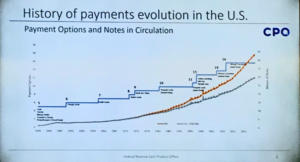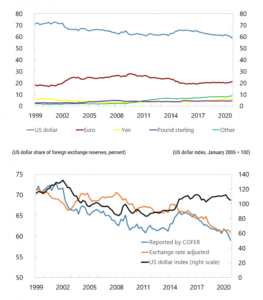The record-setting price of bitcoin this week, driven by the launch of the first U.S. bitcoin exchange-traded fund (ETF) – the most successful ETF launch in history – may support one of the year’s other major FinTech stories: the rise of NFTs.
The bitcoin EFT makes it possible for investors to buy exposure to the future price of bitcoin without purchasing either the futures contracts or bitcoins themselves. Cryptocurrency exchange Coinbase announced its forthcoming NFT service, which is designed to make it easier to create and purchase NFTs. Under the exposure-as-investment theory, an investment in Coinbase or an ETF that owns shares in it, gains you investment entry into the NFT market without owning one.
I have had several people ask me lately to write about NFTs: two financial consultant friends and my daughter, a video artist and translator. Here we go. . .
I look at NFTs through two lenses: the technical and the functional. The technical view is expressed in the initials N-F-T. As an overall designation, “NFT” obscures the legal and economic functions that the technology performs in art, sports, finance, gaming, media, and other areas.
NFT is a technical abbreviation used, mistakenly in my view, as an overarching designation for nontechnical use cases. In this usage, the term doesn’t convey the richness of the technology and its implications for the people who create stuff: “Industries such as fashion, gaming, and music are recognizing the power of NFTs to unlock new forms of creativity and ownership,” the Coinbase release states.
NFT stands for nonfungible token, a unique snippet of cryptographic code that certifies ownership of an asset. “Fungible” is an economic term to describe properties of goods as “interchangeable.” One thing can be used in place of another, like one bitcoin (a fungible token) is just as good as any other. In crypto technology, “nonfungible” designates a digital token with unique properties. Economically, an NFT is unique.
The NFTs that have gained so much attention this year are part of the Ethereum standards and are stored on the public Ethereum blockchain. As a result, they provide an immutable, digital record of an asset’s ownership, authenticity, and provenance or history.
We are used to thinking of ownership in physical terms. We own a house, a car, a coin, and we understand how to prove or dispute ownership of those things. The NFT technology makes it easier to prove ownership of a digital thing, to certify the authenticity of the digital thing in question, and as a result, to more easily sell ownership of that digital thing to someone else. Legally, an NFT shows ownership and provenance.
The ability to represent something digital with a cryptographic token that can be authenticated, stored, and traded gives it financial value that can increase or decrease over time, just like physical assets. How and why they depreciate over time depends on the nature of the asset and how we value it.
That valuation depends on the industry and its practices. Like anything digital, the digital nature of something represented through an NFT is changing the way an industry determines, assigns, and transfers value. Which brings me to two use cases of NFTs these days: art and sports.
I’m going to make this exploration of NFTs a trifecta. This first article covers the technical purpose of an NFT. Next week, I’ll cover its use in the creation of art and after that the technology’s use in monetizing sports.
For more information on NFT technology with an emphasis on economic and legal functions, see:
NFT Canon
An essential list of articles compiled by the VC firm Andreesen Horowitz that covers all things NFT.
The Nonfungible Token Bible: Everything you need to know about NFTs
Covers the Ethereum technical standards for NFTs
5 things people are getting wrong about NFTs
A Fast Company article that makes the case for the value of NFTs.
What Is Provenance?
A general definition and discussion of provenance on the web.
Proof of Provenance: Why NFTs Can Be Valuable
A discussion of NFTs and their role in ownership.
- "
- All
- announced
- Art
- article
- articles
- artist
- asset
- Assets
- authenticity
- Bitcoin
- blockchain
- buy
- car
- cases
- code
- Coin
- coinbase
- company
- consultant
- contracts
- creativity
- crypto
- cryptocurrency
- Cryptocurrency Exchange
- data
- Database
- decentralized
- digital
- Dispute
- distributed ledgers
- driven
- Economic
- ETF
- ethereum
- exchange
- exploration
- Fashion
- FAST
- finance
- financial
- fintech
- Firm
- First
- For Investors
- function
- fund
- future
- Futures
- gaming
- General
- good
- goods
- here
- history
- House
- How
- How To
- HTTPS
- Increase
- industry
- information
- investment
- Investors
- IT
- launch
- Law
- Legal
- List
- major
- Market
- Media
- medium
- Music
- NFT
- NFTs
- Other
- People
- physical
- power
- price
- public
- purchase
- sell
- Shares
- So
- Sports
- standards
- stores
- Stories
- successful
- support
- Technical
- Technology
- The Future
- Thinking
- time
- token
- transaction
- u.s.
- Valuation
- value
- VC
- Video
- View
- W3
- web
- week
- WHO
- year






